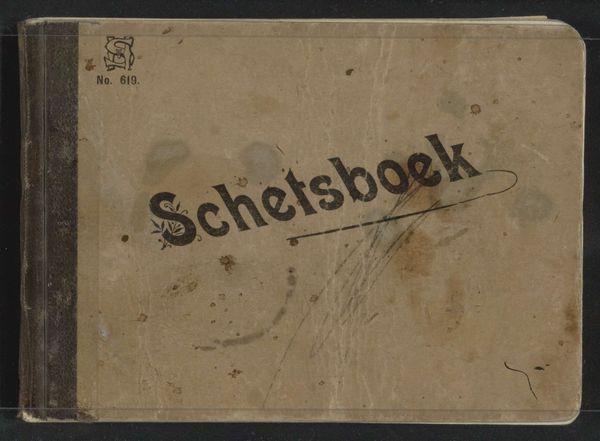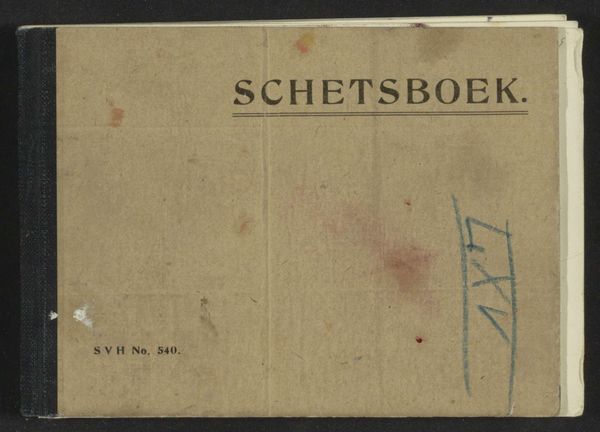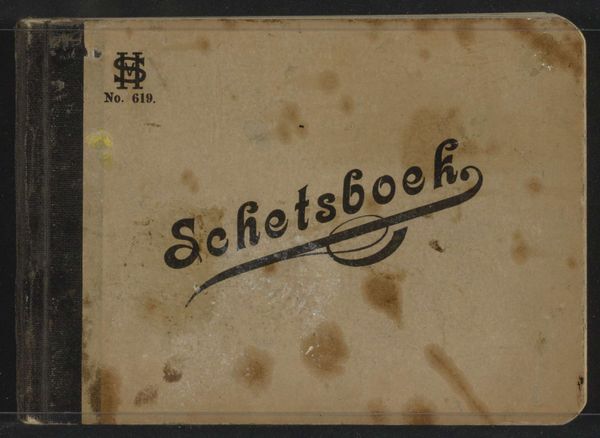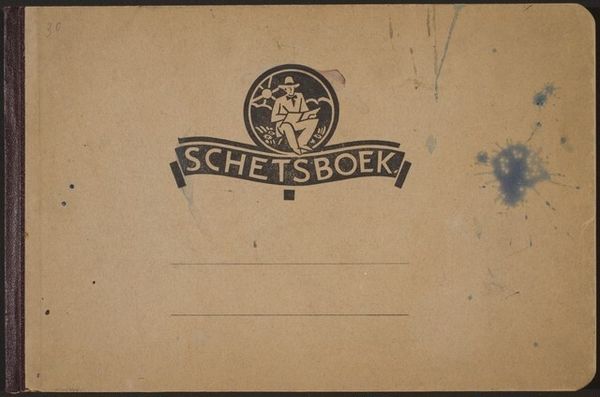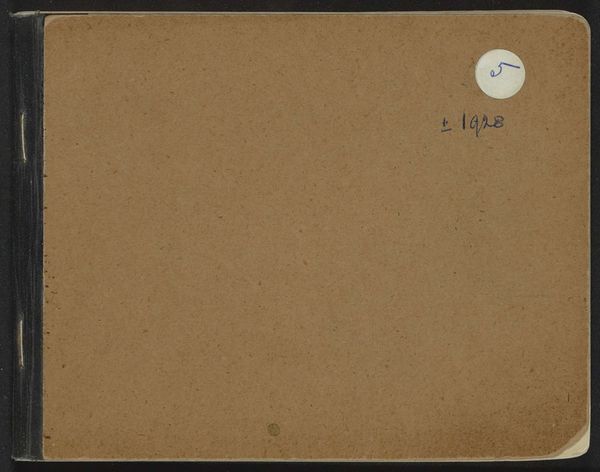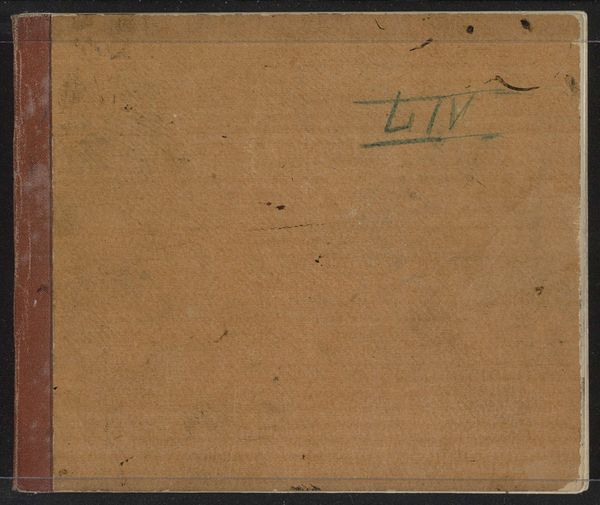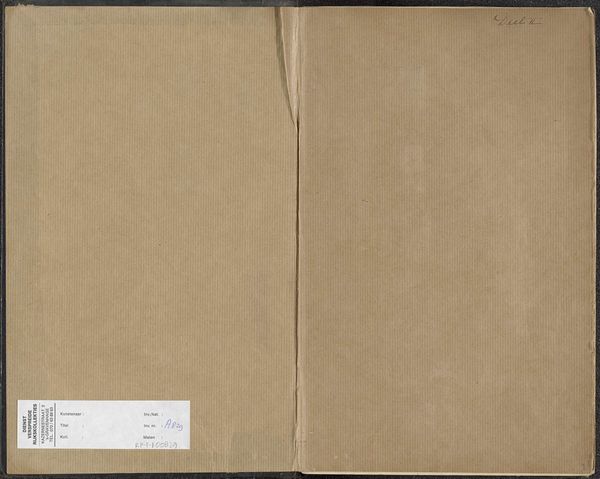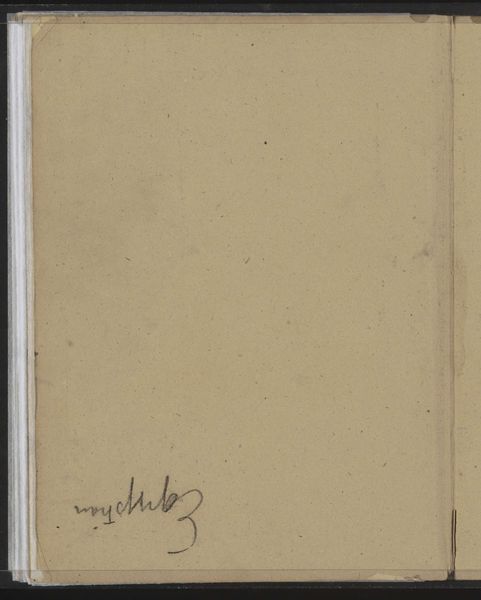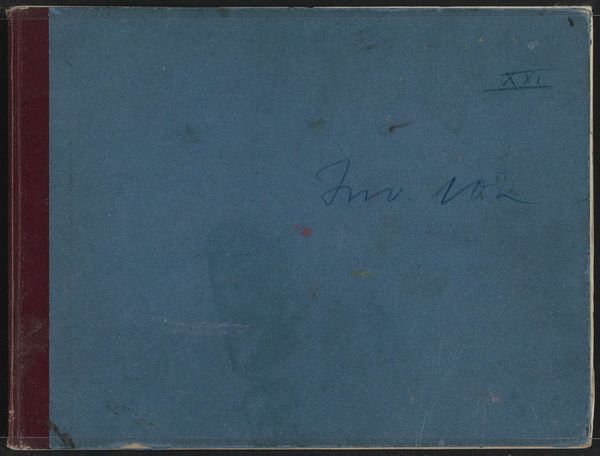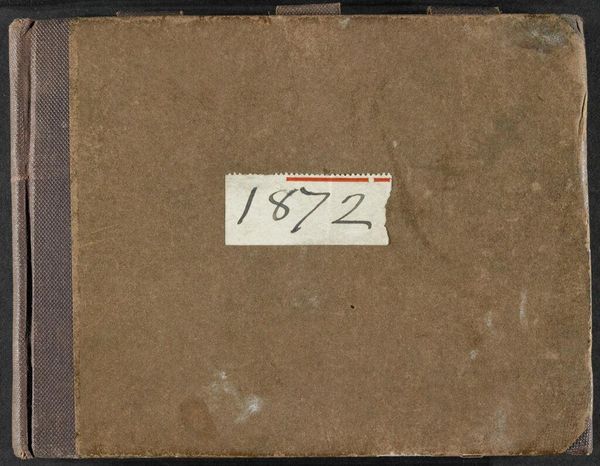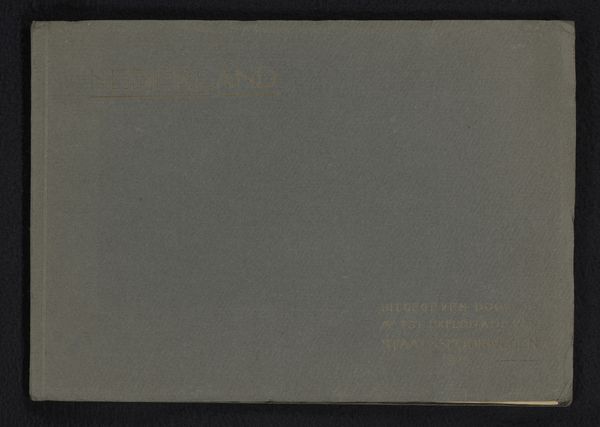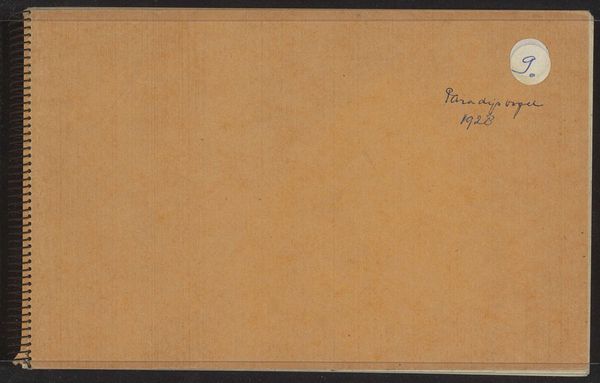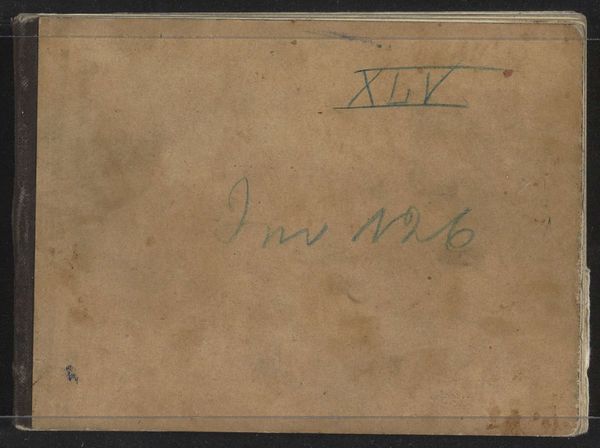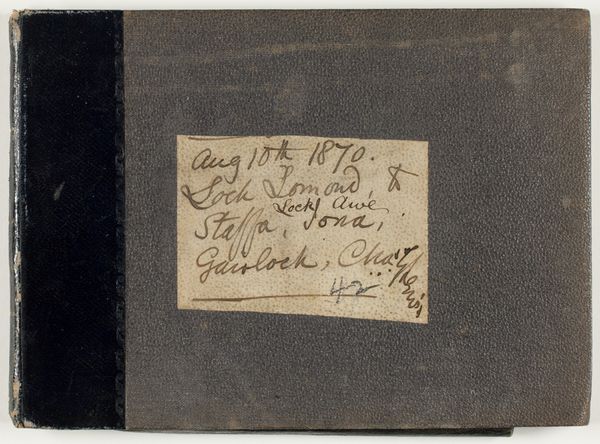
drawing, graphic-art, paper, typography
#
drawing
#
graphic-art
#
paper
#
typography
Dimensions: height 234 mm, width 312 mm, thickness 10 mm, width 625 mm
Copyright: Rijks Museum: Open Domain
Curator: Before us is Isaac Israels' "Sketchbook III with 36 leaves," believed to have been compiled sometime between 1915 and 1925. It’s held here at the Rijksmuseum. What strikes you most about it? Editor: Initially, the austerity of the cover grabs me. The bare cardboard, the utilitarian typography spelling out "SCHETSBOEK"—it's all so unpretentious. Almost feels more like industrial design than fine art, even though its graphic-art nonetheless. Curator: Interesting. Given Israels' involvement with the Hague School and his depictions of modern urban life, consider this humble notebook as an essential tool of his trade. He employed drawing and graphic-art techniques to capture transient moments. How might that change your view? Editor: Well, if we see this sketchbook cover as a functional object in a network of artistic production, it illuminates his process. How many iterations? What social settings might have influenced the paper's qualities and inks that formed the words on the cover? Was the design unique or sourced? All vital when situating his position in the social environment. Curator: Precisely. And look at the handwritten inscriptions—"III" at the top, some notes possibly by Israels. The notebook wasn't conceived for a public showing; it served his creative impulses directly. Editor: It underscores the performative aspect inherent within art. A tool becomes embedded with memories—the circumstances surrounding when and where he would have created work from that sketchbook, with that material and in turn solidifying the history behind Isaac. It shifts the traditional relationship with artworks as commodities on the walls. Instead it’s history and labor. Curator: Indeed, understanding its materials—the paper, the binding, and the production techniques —helps us to view it within broader material and socio-economic structures. Editor: And even just the museum showing an image of the object speaks volumes for the role of museums to dictate public interest, doesn’t it? A shift from the image *within* the book to the cover *itself.* It re-contextualizes drawing—not as some elevated master practice but bound to cultural influence. Curator: A perfect synthesis, bringing art history closer to the everyday workings of the artistic world. Editor: An illustration of the hidden side to that public imagery.
Comments
No comments
Be the first to comment and join the conversation on the ultimate creative platform.
